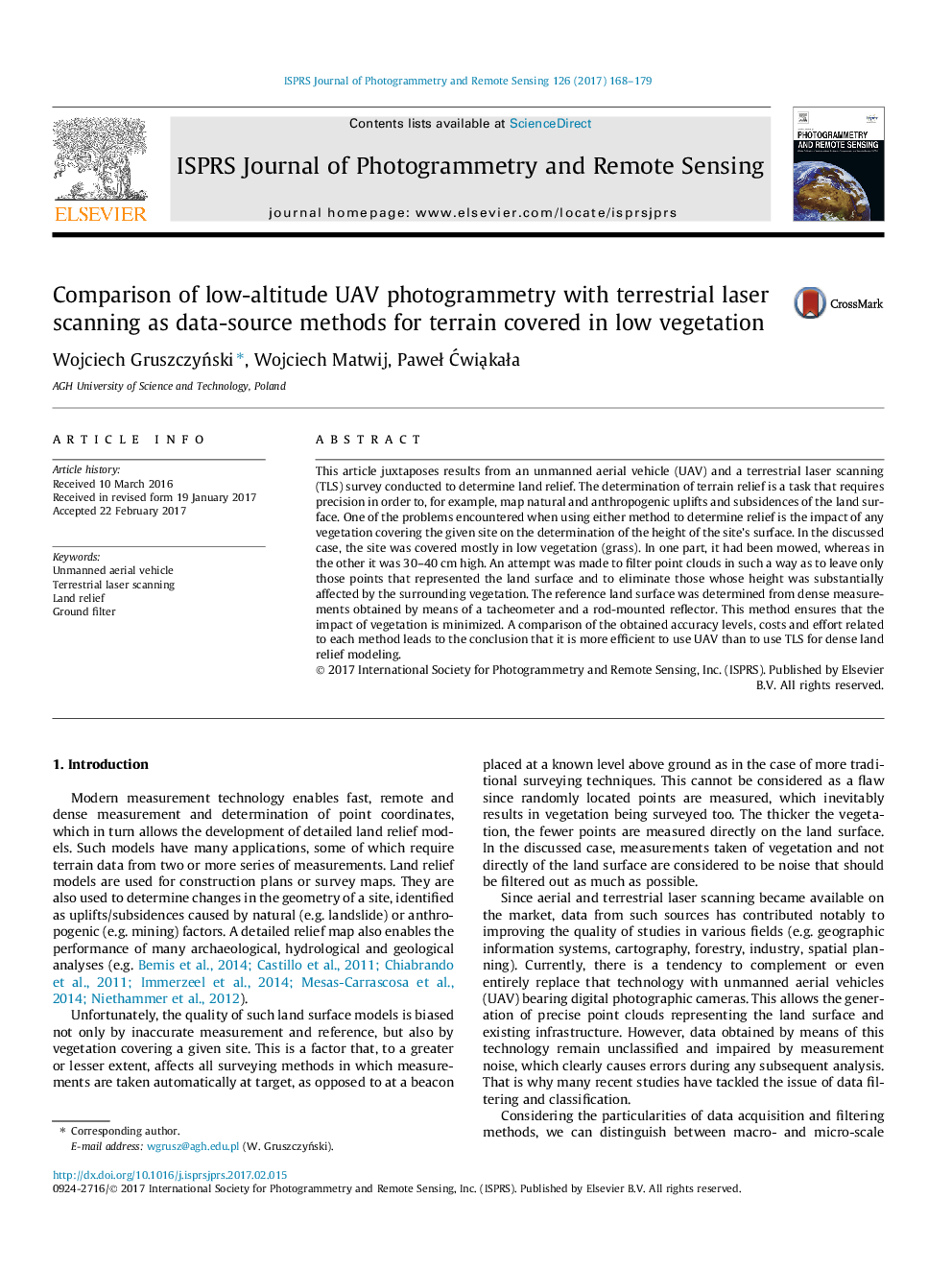| Article ID | Journal | Published Year | Pages | File Type |
|---|---|---|---|---|
| 4972949 | ISPRS Journal of Photogrammetry and Remote Sensing | 2017 | 12 Pages |
Abstract
This article juxtaposes results from an unmanned aerial vehicle (UAV) and a terrestrial laser scanning (TLS) survey conducted to determine land relief. The determination of terrain relief is a task that requires precision in order to, for example, map natural and anthropogenic uplifts and subsidences of the land surface. One of the problems encountered when using either method to determine relief is the impact of any vegetation covering the given site on the determination of the height of the site's surface. In the discussed case, the site was covered mostly in low vegetation (grass). In one part, it had been mowed, whereas in the other it was 30-40Â cm high. An attempt was made to filter point clouds in such a way as to leave only those points that represented the land surface and to eliminate those whose height was substantially affected by the surrounding vegetation. The reference land surface was determined from dense measurements obtained by means of a tacheometer and a rod-mounted reflector. This method ensures that the impact of vegetation is minimized. A comparison of the obtained accuracy levels, costs and effort related to each method leads to the conclusion that it is more efficient to use UAV than to use TLS for dense land relief modeling.
Related Topics
Physical Sciences and Engineering
Computer Science
Information Systems
Authors
Wojciech GruszczyÅski, Wojciech Matwij, PaweÅ ÄwiÄ
kaÅa,
